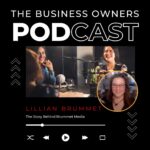209:1
This is the chance of obtaining an appointment as a result of a making a cold call to a buyer who doesn’t know about the caller and the caller doesn’t know anything about the buyer.Source: “Probability of Success Based on Warmth of Call” [Infographic], Sales for Life
90%
The percentage of customers who leave a business
without telling them.
A business with these statistics is likely to be experiencing difficulty in meeting revenue targets and retaining customers. The chances of the business outlasting its competitors are slim and worse over the long term.
So what can you do to improve the odds so your business succeeds?
One of the first things to consider is your business, regardless of whether it’s business to business or business to consumer, is operating in a world where the customer controls the sales process (see “Customer Controlled Selling” image below.

Research shows:
- 67% of the buyer’s journey is now completed digitally (Source: Sirus Decisions)
- “57% of the purchase decision is already complete before the customer even calls the supplier.” (Source: CEB)
Once the business controlled where prospects and customers could obtain information about it and its products and services. With the advent of the Internet and social media this is no longer the case. The customer can use many different online channels to access information about the business.
Often the business does not know what information a specific prospect or customer has accessed. However, with various tactics the business can increase the chances of obtaining this information.
Prospects and customers now research the business AND the products AND its employees online before they make contact. Due to the amount and varying types of information a business posts online the sales process is rarely “linear” and is more like walking through a maze until the prospect makes contact or is contacted.
Once the prospect makes contact the sales process can be more controlled a lot more. Although it is important to realise the prospect is by this point a considerable distance down the part of the ‘buying decision”.
The sales people now must be looking at ways to demonstrate how the business and the product add-values to the prospect or their business. The prospect has already researched the features and compared them with competitors and possible know the price. So the sales people need to know and show the key points of difference in terms of value and benefits.
So, if your business is to move the odds in its favour, then your business needs to look at its online marketing and social selling information and processes.
Social Selling is really good old-fashioned customer service aided by technology. You learn as much as you can about your prospects or customers. The good news is the Internet and social media enable to you gather more information than ever before.
However, caution is needed in the use of the information gathered as there is a fine line between using this information in a genuine manner and stalking. Much depends on what is online and more importantly how you use it based on how well you know the person.
For example, you might only post a “Happy Birthday” message on a prospect’s Facebook page or send them a card if you have had a reasonable level of interaction.
Would you send a business acquaintance a birthday card if you only met them yesterday? So why would you make a similar post on social media? This example highlights you need to consider your interactions and not interact because you can.
A poorly considered interaction can have a negative impact on the relationship.
As Jon Ferrara, CEO of Nimble CRM so often points out sales and customer service people are limited by what is known as the Dunbar Number of 150. Anthropologist and evolutionary psychologist, Robin Dunbar says this is the number of people an individual can maintain a stable relationship with.
Between customers, prospects and networking today’s business people are trying to maintain relationship far in excess of the Dunbar Number.
So what can you do to improve relationship management?
By using Customer Relationship Management (CRM) systems and Marketing Automation tools you and your team can build very effective relationships with customers, prospects and your contact network. With over 300 CRM and marketing Automation tools on the market today you are spoilt for choice. For information about many of these tools visit www.g2crowd.com/categories/crm.
You can stack the odds in favour so your business succeeds.
You can do this by giving some thought about your goals and objectives, implementing defined action plans, profiling what your prospects and customers look like, staff training, and using technology.
If you have questions about how to improve the odds for your business’ success you’re welcome to contact the author, Ross Keating.




















